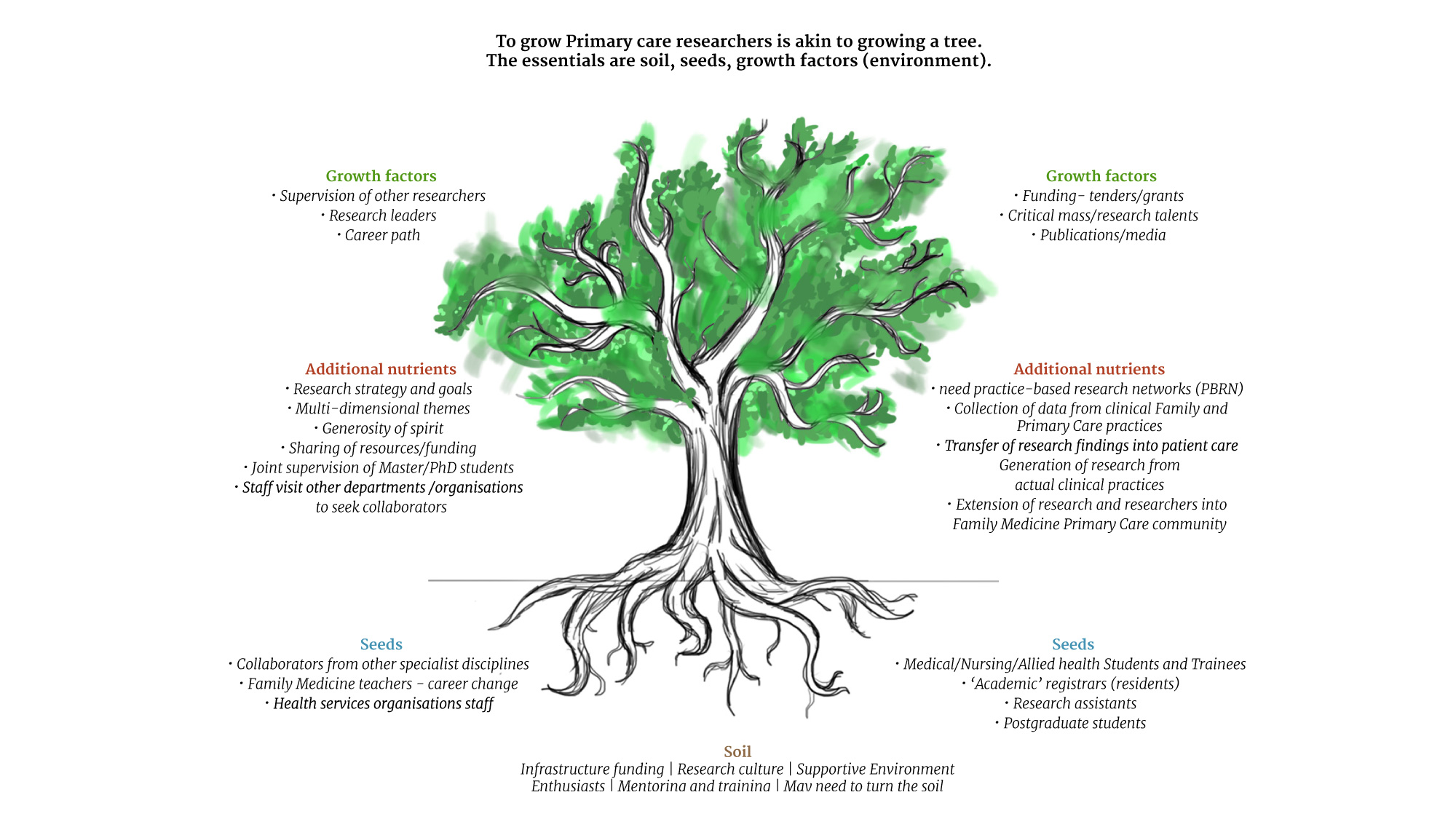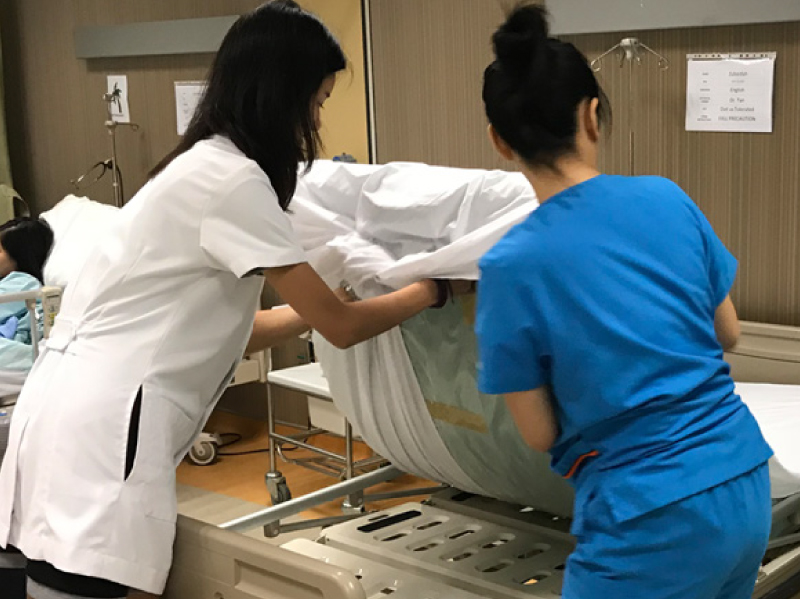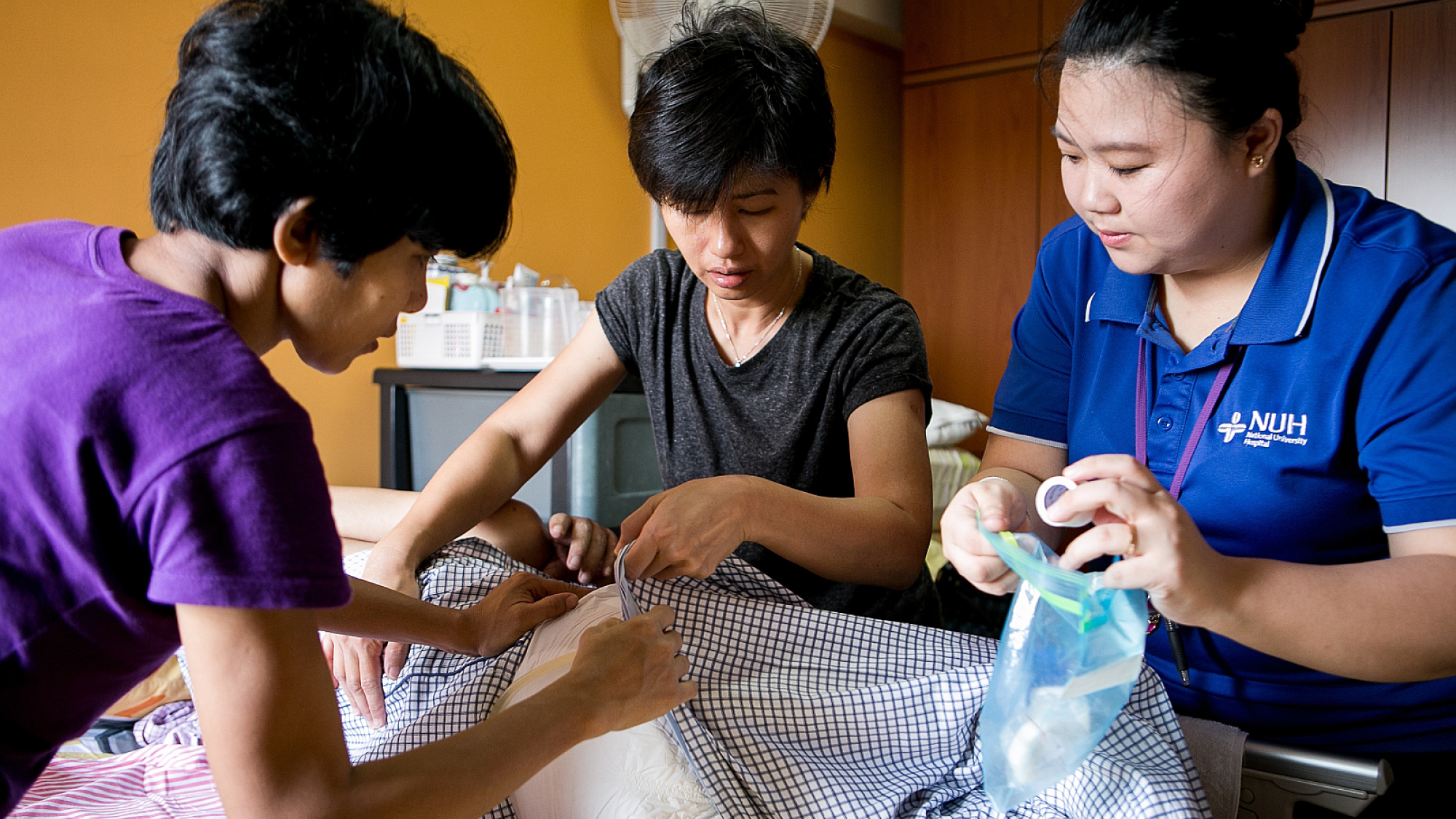Community Care Education at NUS Medicine
By Dr Goh Lay Hoon
Department of Family Medicine, NUHS
What is Community Care in Singapore?
In the United Kingdom and Australia, community care is defined as providing people with service and support to live with dignity and independence in the community or in their homes. This aims to avoid social isolation or institutionalisation. Community care generally refers to care services outside of hospitals or institutions. In Singapore, community care encompasses community-based primary medical care, nursing and social services.
Primary care is the foundation of the healthcare system in Singapore, by providing the first point of patient contact and care in the community. These primary care clinics provide continuing, comprehensive, coordinated, accessible and affordable care for patients of different age groups; treat acute conditions such as upper respiratory tract infections; manage chronic illnesses such as diabetes and hypertension; and keep the population healthy through health promotion and preventive measures such as targeted health screening and vaccinations. The clinics also coordinate patients’ care with other providers and refer patients who require more specialised medical care.
Primary care clinics refer to the 1,600 private general practitioners’ (GP) clinics and the 20 polyclinics, with the former meeting 80 per cent of the nation’s total primary care demand. The GP clinics range from solo practices to medium and large corporate groups. Community Health Centres, introduced in 2010, assist GPs to take care of chronic patients by providing ancillary and allied health professional support such as physiotherapy, dietary advice, nurse counseling, podiatry and diabetic eye and foot screenings.
About 340 GP clinics have formed 10 networks under the Primary Care Network (PCN) scheme. The network deploys multi-disciplinary teams, each consisting of a GP, nurse and primary care coordinator, to provide more effective chronic disease management for patients. The PCN GPs can also access diabetic foot and eye screenings and nurse counseling.
The polyclinics and the larger GP groups such as the Family Medicine Centres (FMC) are one-stop, team-based primary healthcare centres, with in-house laboratory, nursing and allied health professional support to coordinate care and optimise people’s health in the community.
Home-based services are available for people with disabilities who require regular assistance in order to live in the community. The services cover basic care such as personal care, housekeeping and medication reminders; therapy services such as when a doctor makes a home visit, home nursing, home rehabilitation, etc.
Senior activity centres are communal spaces in the HDB block void decks, which conduct activities to engage the older people in social and recreational activities.
About 4,900 of Singapore’s estimated 34,000 practising nurses are in community care. Singapore is also exploring the role of community nurse teams, whose members work within the community that they are assigned, to look after and provide nursing care, health promotion counseling and disease prevention activities for the surrounding population.
The Ministry of Health (MOH) “3 Beyonds” strategy, viz. beyond hospital to community, beyond quality to value and beyond healthcare to health, was announced in 2017. The strategy is a bid to sustain quality healthcare as demands are projected to increase with the ageing population.
To address the component “beyond hospital to community”, the MOH collaborated with numerous government agencies, ministries and private agencies to build capacity, capability and quality of care in community care. Generally, people prefer to access health care in places near their homes and in their communities. Community- based services which optimally manage patients in the community, reduce the reliance on acute hospital services which are more expensive.

Photo: Regional Health System Planning Office, NUHS
The MOH is building up the number of family physicians and other broad-based specialty physicians such as internal medicine or geriatric medicine, who are able to provide holistic care to patients with multiple medical ailments, as Singapore shifts its focus towards preventive and community care. The plan is to train 150 family physicians each year to meet the new care model; to anchor care in the community so as to reduce reliance on hospital specialist care; and to reach out to the population in the community to keep them healthy.
Family physicians working in the community have been identified to play an enlarging and pivotal role in holistically managing the healthcare needs of the population. The tasks include promoting health, preventing disease, optimising care of chronic diseases and minimising disabilities due to age, disease and premature death. The family physicians will address primary prevention, disease screening, maintenance of health and end-of-life care.
The Community Health Assist Scheme (CHAS) will be extended to all Singaporeans with chronic ailments. This will enable all patients to qualify for subsidised medical treatment, with tiered benefits based on their income levels, even for treatment at private GP clinics.
With increasing numbers of patients projected to be managed in GP clinics, the community workforce should grow as well, with appropriate and adequate support systems. Healthcare students, in particular medical students should similarly be trained to provide competent community care.
Community care is more holistically and effectively delivered in interprofessional teams, consisting of different health professionals such as doctors, nurses, allied health professionals, pharmacists and social work professionals. Team members work together to meet the varied and interconnected medical and social needs of patients, especially older patients with chronic medical conditions and challenging social issues.
Thus, interprofessional education (IPE) in NUS Medicine is gaining importance and momentum, whereby students from different healthcare professional programmes learn together and are taught shared competencies and one another’s unique competencies. The overall goal is to improve the function of a cohesive team-based healthcare workforce.
Medical students in future are likely to be working in interprofessional teams after graduation, whether in institutional or community practice. Therefore, IPE is a crucial step in preparing a “collaborative, competent and practice-ready” NUS medical graduate.
Teaching Community Care in NUS Medicine
The Family Medicine Division in NUS Yong Loo Lin School of Medicine is collaborating with the community service partners to create placements for students with relevant learning outcomes; to continually evaluate and improve these placements and to ensure that students have adequate exposure and understanding of the community services and their linkages to one another, to social care services and to the hospitals. The following are examples of such placements arranged by the Division.
1. Phase I Polyclinic attachment
As part of the early professional exposure to community practice, Phase I students starting from AY2017-18 will be posted to the polyclinics. The learning outcomes are for students to observe and interact with staff and patients; to understand the roles of doctors and other healthcare professionals in delivering health care in polyclinics; to observe the interactions between the healthcare professionals and patients and their families in the polyclinic; and to appreciate the experience of patients and their families in navigating the primary health care system in Singapore.
From the feedback of the AY2017-2018 Phase I students, the polyclinic attachment proved to be an eye opener for them. The students reflected on how they observed elderly patients with chronic conditions navigate a busy polyclinic and how the polyclinic doctors and nurses demonstrated compassion to the patients while skillfully addressing their multiple concerns. Students also recognised the important roles of non-physician colleagues who deliver care in the polyclinic teams. In addition, many students realised that the clinical work in polyclinics is meaningful and impactful and indicated that they would consider working in community clinics upon their graduation as doctors.

Phase I medical student assigned to observe staff-patient interactions at the pharmacy of a polyclinic.
2. Phase I Caregiver Training Module
The overarching aim is for medical students to learn to work together and to appreciate the role of nurses in the healthcare team. This new module was started for the AY2017-2018 Phase I cohort. Through the interprofessional education platform, Phase I students learnt alongside nursing students in simulated ward rounds and assisted ward nurses in providing caregiving to patients.
The learning outcomes are for students to recognise the complex nature of caregiving; to demonstrate comprehension and practice of caregiving tasks and to assist in caregiving with nurses as teachers. Students learn to assist in basic caregiving tasks such as making beds, changing and bathing, transfer and turning in bed, use of bed pan and commode, changing diapers and taking vital signs such as blood pressure and temperature. Students also have the opportunity to assist in less common or more complex tasks such as wound care, nasogastric tube feeding, care of urinary catheters and use of pulse oximetry.
Students’ feedback indicated that they appreciated how the nurses role-modelled compassionate behavior towards the patients, despite being busy. They also recognised how the nurses’ warm and genuine rapport with patients and family members is pivotal to achieving successful outcomes of caregiving, besides competency in task performance.
3. Phase I Longitudinal Patient Experience
Under the year-long longitudinal patient experience in Phase I, students form small groups with nursing students to make home visits supervised by medical and nursing faculty staff. Patients with chronic conditions or disabilities resulting in a home bound status, are selected for this module. Students make four to five home visits over a year under the mentorship of tutors, who have referred the patients.

A Phase I medical student with a year one nursing student changing bedsheets during the simulated ward round in the Caregiver Training Module.
The students’ learning outcomes are to appreciate the impact of a home environment on patient’s illness journey; the impact of illness on a patient’s activities of daily living; to recognise the roles of the family and carers in managing the patient’s illness; to understand the importance of care continuity between various health care providers in the hospital and community settings; to understand health care needs and health seeking behavior from a patient’s perspectives; and to appreciate interprofessional education involving medical and nursing students in this experience.
Students in their groups are required to reflect and submit written assignments based on the learning outcomes. Tutors will meet the students on a regular basis for debriefing, clarifying doubts and to summarise the learning points.
4. Phase III Family Medicine Posting
The Family Medicine posting in Phase III is an apprenticeship comprising active observership with supervised consultations. Students are prepared during foundation workshops early in the posting so that they can learn well during patient encounters in subsequent clinical placements. The workshop covers commonly encountered topics in the community, viz. adolescent health, chronic disease management, healthcare finances, mental health, integrated care for older people and women’s health, etc.
Students are posted to the polyclinics and GP clinics, where they are assessed for competency in consultation and communication skills and the ability to articulate a care plan for patients with chronic medical conditions. They used a workbook to collect patient profiles and the clinic practices, to achieve the aim of understanding the family practice landscape through comparison and discussion of one another’s experiences in the clinics.

Photo: Regional Health System Planning Office, NUHS
Students also discussed and reflected on the role of family physicians in patient care, based on the themes of communication barriers, doctor-patient discordance, ethical dilemma and mental health issues. Through role-play and discussion with tutors, students arrived at their own learning points about the themes, particularly in application to their clinical experiences.
5. Phase IV Selective Posting
The three-week Phase IV Family Medicine outpatient selective will take place before Phase V year starts in the current AY2018-2019. It will be a timely posting for senior medical students to consolidate and apply learning garnered from previous Family Medicine clinical postings. As doctors-in-training inducted into the workings of the family practice settings viz. the polyclinic, family medicine clinic, or private GP clinics, students will actively participate in the work of the practice, and in the supervised care of patients seen at the clinics.
Conclusion
Currently, there are community-based programmes within certain Phases to address the educational gaps. Further deliberation and discussion with stakeholders will be required to plan a coherent and aligned community care curricula for medical students’ training and assessment. The overarching purpose of educating our medical students in community care is to enable these future doctors to be competent to work in community-based health care services, which will eventually provide the lion’s share of health care in Singapore. Our duty as teachers is to prepare medical students to be physicians who will always strive for their patients’ best interests, whether in institutional or community practice.
About the writer
Dr Goh Lay Hoon is an Assistant Professor in the Family Medicine Division of the NUS Yong Loo Lin School of Medicine, where she is involved in curriculum development and implementation. She is also Physician Faculty in the NUHS Family Medicine Residency Program and Clinical Lead for the Well Programme in Alexandra Hospital.
